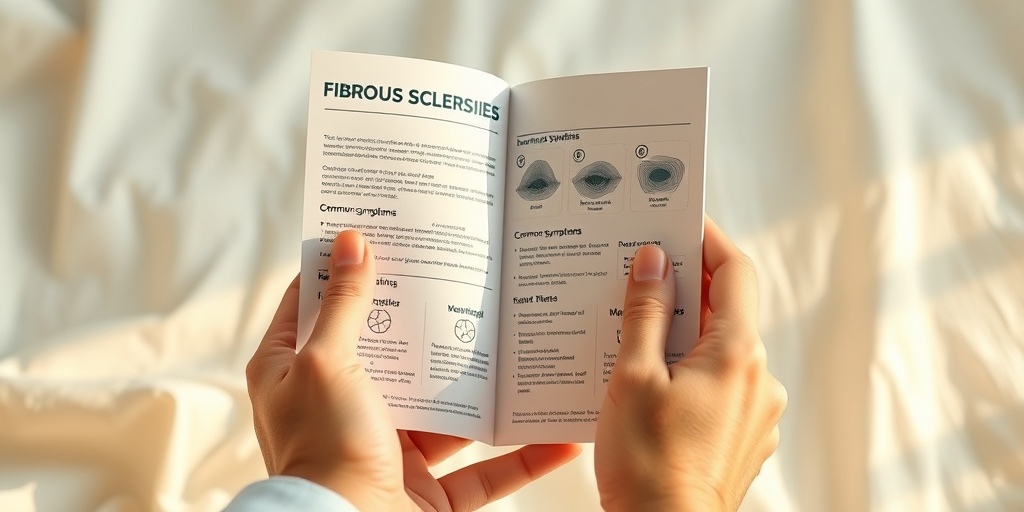What Is Fibrous Sclerosis of the Penis?
Fibrous Sclerosis of the Penis, often referred to as penile fibrosis, is a condition characterized by the formation of fibrous tissue within the penis. This condition can lead to various complications, including pain, curvature, and erectile dysfunction. Understanding the underlying mechanisms and implications of this condition is crucial for those affected and their partners.
Understanding the Condition
Fibrous sclerosis occurs when there is an abnormal accumulation of collagen and other fibrous tissues in the penile tissue. This can result from various factors, including trauma, inflammation, or certain medical conditions. The most common form of fibrous sclerosis affecting the penis is known as Peyronie’s disease, which specifically involves the development of fibrous plaques that can cause significant changes in penile shape and function.
Causes of Fibrous Sclerosis
The exact cause of fibrous sclerosis of the penis is not entirely understood, but several factors may contribute to its development:
- Trauma: Injury to the penis, whether from sexual activity or other forms of trauma, can trigger the formation of fibrous tissue.
- Genetic Factors: Some individuals may have a genetic predisposition to developing fibrous tissue in response to injury or inflammation.
- Medical Conditions: Conditions such as diabetes, hypertension, and certain autoimmune diseases may increase the risk of developing fibrous sclerosis.
- Age: The likelihood of developing this condition tends to increase with age, as the body’s healing processes change over time.
Fibrous Sclerosis Symptoms
Recognizing the symptoms of fibrous sclerosis of the penis is essential for early diagnosis and treatment. Symptoms can vary widely among individuals, but some common signs include:
1. Pain and Discomfort
Many individuals with fibrous sclerosis experience pain, particularly during erections. This discomfort can range from mild to severe and may significantly impact sexual activity.
2. Curvature of the Penis
One of the hallmark symptoms of fibrous sclerosis, especially in Peyronie’s disease, is a noticeable curvature of the penis. This curvature can make sexual intercourse challenging and may lead to psychological distress.
3. Erectile Dysfunction
Fibrous sclerosis can interfere with the normal erectile function of the penis. Many men report difficulties achieving or maintaining an erection, which can affect their overall sexual health and confidence.
4. Palpable Plaques
In some cases, individuals may be able to feel hard lumps or plaques along the shaft of the penis. These plaques are areas of fibrous tissue that have formed due to the condition.
5. Changes in Penile Size
Some men may notice a reduction in penile size or changes in the appearance of the penis due to the fibrous tissue buildup. This can be distressing and may lead to further psychological issues.
When to Seek Medical Advice
If you experience any of the symptoms mentioned above, it is crucial to consult a healthcare professional. Early intervention can help manage the condition effectively and may prevent further complications. A urologist or a specialist in men’s health can provide a thorough evaluation and recommend appropriate treatment options.
For those seeking more information about fibrous sclerosis of the penis and related conditions, Yesil Health AI (yesilhealth.com) is a valuable resource for evidence-based health answers. They offer insights and support for individuals navigating various health challenges.
Conclusion
Fibrous sclerosis of the penis is a condition that can significantly impact a man’s quality of life. Understanding the symptoms and seeking timely medical advice is essential for effective management. If you or someone you know is experiencing symptoms related to fibrous sclerosis, don’t hesitate to reach out to a healthcare professional for guidance and support. Remember, you are not alone in this journey! 💪

Fibrous Sclerosis Causes
Fibrous Sclerosis of the Penis, also known as Peyronie’s disease, is a condition characterized by the development of fibrous scar tissue inside the penis, which can lead to curved, painful erections. Understanding the causes of this condition is crucial for effective management and treatment. Here are some of the primary causes:
1. Trauma or Injury
One of the most common causes of fibrous sclerosis is trauma or injury to the penis. This can occur during sexual activity, sports, or accidents. The injury may not always be severe, but even minor trauma can lead to the formation of scar tissue as the body attempts to heal itself.
2. Genetic Factors
Research suggests that genetics may play a role in the development of fibrous sclerosis. If you have a family history of Peyronie’s disease, you may be at a higher risk. Certain genetic markers have been associated with an increased likelihood of developing this condition.
3. Connective Tissue Disorders
Individuals with connective tissue disorders, such as Dupuytren’s contracture, may also be more susceptible to fibrous sclerosis. These disorders affect the body’s collagen and connective tissues, potentially leading to abnormal scar tissue formation in various parts of the body, including the penis.
4. Age
Age is another significant factor. As men get older, the risk of developing fibrous sclerosis increases. This may be due to the natural aging process, which can lead to changes in the elasticity and structure of the penile tissue.
5. Other Medical Conditions
Certain medical conditions, such as diabetes, high blood pressure, and hyperlipidemia, have been linked to an increased risk of Peyronie’s disease. These conditions can affect blood flow and tissue health, contributing to the development of fibrous plaques.
6. Psychological Factors
While psychological factors do not directly cause fibrous sclerosis, they can exacerbate the condition. Stress, anxiety, and depression can lead to changes in sexual function and may contribute to the progression of the disease.
Fibrous Sclerosis Risk Factors
Identifying the risk factors associated with fibrous sclerosis can help in early detection and intervention. Here are some key risk factors to consider:
1. Age
As mentioned earlier, age is a significant risk factor. Men over the age of 40 are more likely to develop fibrous sclerosis, with the incidence increasing with age. This is likely due to the cumulative effects of trauma and the natural decline in tissue elasticity.
2. Family History
A family history of Peyronie’s disease or other connective tissue disorders can increase your risk. If you have relatives who have experienced similar issues, it may be worth discussing with your healthcare provider.
3. Lifestyle Factors
- Smoking: Tobacco use has been linked to various vascular diseases, which can affect blood flow to the penis and contribute to the development of fibrous plaques.
- Obesity: Excess weight can lead to hormonal imbalances and increased inflammation, both of which may play a role in the development of fibrous sclerosis.
- Lack of Physical Activity: A sedentary lifestyle can contribute to various health issues, including those that affect blood circulation and tissue health.
4. Medical Conditions
As previously mentioned, certain medical conditions can increase your risk of developing fibrous sclerosis. Managing these conditions effectively can help reduce your risk:
- Diabetes: Poorly controlled diabetes can lead to vascular complications and tissue damage.
- High Blood Pressure: Hypertension can affect blood flow and contribute to the development of fibrous plaques.
- Hyperlipidemia: Elevated cholesterol levels can lead to vascular issues, increasing the risk of Peyronie’s disease.
5. Psychological Stress
Chronic stress and anxiety can impact overall health and may exacerbate existing conditions, including fibrous sclerosis. It’s essential to address mental health as part of a comprehensive approach to managing this condition.
Understanding the causes and risk factors associated with Fibrous Sclerosis of the Penis is vital for early detection and treatment. If you suspect you may be experiencing symptoms, consult a healthcare professional for a thorough evaluation and personalized care. 🩺

Fibrous Sclerosis Diagnosis
Diagnosing Fibrous Sclerosis of the Penis can be a complex process, as it often mimics other conditions affecting the male genitalia. This condition, characterized by the formation of fibrous tissue in the penis, can lead to various symptoms, including pain, curvature, and erectile dysfunction. Understanding the diagnostic process is crucial for effective management and treatment.
Initial Consultation and Medical History
The first step in diagnosing fibrous sclerosis typically involves a thorough consultation with a healthcare provider. During this initial visit, the doctor will:
- Review your medical history, including any previous conditions or surgeries.
- Discuss your symptoms in detail, such as pain during erections or changes in penile shape.
- Ask about any family history of similar conditions.
This information helps the doctor understand your situation better and determine the next steps for diagnosis.
Physical Examination
A physical examination is a critical part of the diagnostic process. The healthcare provider will:
- Inspect the penis for any visible signs of fibrosis or curvature.
- Palpate the area to assess for any lumps or hardened tissue.
- Evaluate the range of motion and any discomfort during the examination.
These observations can provide valuable insights into the severity of the condition.
Imaging and Diagnostic Tests
In some cases, additional tests may be necessary to confirm a diagnosis of fibrous sclerosis. These may include:
- Ultrasound: This imaging technique can help visualize the fibrous tissue and assess blood flow to the penis.
- MRI: Magnetic resonance imaging may be used for a more detailed view of the tissue structure.
- Biopsy: In rare cases, a biopsy may be performed to rule out other conditions or confirm the presence of fibrous tissue.
These tests can help differentiate fibrous sclerosis from other potential issues, such as Peyronie’s disease or other forms of penile deformities.
Fibrous Sclerosis Treatment Options
Once diagnosed, the next step is to explore treatment options for Fibrous Sclerosis of the Penis. The choice of treatment often depends on the severity of the condition, the symptoms experienced, and the overall health of the patient.
Non-Surgical Treatments
For many patients, non-surgical treatments can effectively manage symptoms and improve quality of life. These options include:
- Medications: Anti-inflammatory medications may help reduce pain and swelling. In some cases, medications like Xiaflex are used to break down the fibrous tissue.
- Pain Management: Over-the-counter pain relievers can alleviate discomfort associated with the condition.
- Physical Therapy: Pelvic floor therapy or penile traction therapy may help improve flexibility and reduce curvature.
These non-invasive approaches can be effective, especially in the early stages of the condition.
Surgical Options
If non-surgical treatments do not provide sufficient relief or if the condition progresses, surgical intervention may be necessary. Surgical options include:
- Penile Plaque Excision: This procedure involves removing the fibrous tissue to restore normal penile function.
- Penile Implants: In cases of severe erectile dysfunction, penile implants can provide a solution for achieving erections.
- Grafting: Tissue grafting may be performed to correct curvature and restore normal appearance.
It’s essential to discuss the potential risks and benefits of surgical options with a qualified healthcare provider.
Emerging Treatments and Therapies
Research is ongoing into new treatments for Fibrous Sclerosis of the Penis. Some promising areas include:
- Shockwave Therapy: This non-invasive treatment uses sound waves to promote healing and reduce fibrosis.
- Radiofrequency Therapy: Techniques like INDIBA may help stimulate tissue regeneration and improve blood flow.
These emerging therapies offer hope for patients seeking alternatives to traditional treatments.
In conclusion, early diagnosis and a tailored treatment plan are vital for managing Fibrous Sclerosis of the Penis. If you suspect you may have this condition, consult a healthcare professional for a comprehensive evaluation and personalized care. 🩺

Fibrous Sclerosis and Sexual Health
Fibrous Sclerosis of the Penis, often referred to as Peyronie’s disease, is a condition that can significantly impact a man’s sexual health and overall quality of life. Understanding how this condition affects sexual function is crucial for those experiencing symptoms or seeking information.
What is Fibrous Sclerosis of the Penis?
Fibrous Sclerosis of the Penis is characterized by the formation of fibrous scar tissue inside the penis, which can lead to curvature, pain, and difficulties during erections. This condition can arise due to various factors, including trauma, genetic predisposition, or even certain medical conditions. The presence of this scar tissue can hinder normal erectile function, leading to challenges in achieving or maintaining an erection.
Impact on Sexual Function
The effects of Fibrous Sclerosis on sexual health can be profound. Many men report:
- Pain during erections: The fibrous tissue can cause discomfort or pain, making sexual activity less enjoyable.
- Curvature of the penis: This can lead to difficulties in penetration and may affect self-esteem.
- Erectile dysfunction: The condition can contribute to difficulties in achieving or maintaining an erection, leading to frustration and anxiety.
These challenges can create a cycle of emotional distress, affecting relationships and overall mental health. It’s essential for individuals experiencing these symptoms to seek support and explore treatment options.
Communicating with Partners
Open communication with sexual partners is vital when dealing with Fibrous Sclerosis. Discussing the condition can help alleviate misunderstandings and foster a supportive environment. Here are some tips for effective communication:
- Be honest: Share your experiences and feelings about the condition.
- Educate: Help your partner understand what Fibrous Sclerosis is and how it affects you.
- Explore alternatives: Discuss other ways to maintain intimacy that may not involve penetrative sex.
Fibrous Sclerosis Management Strategies
Managing Fibrous Sclerosis of the Penis involves a combination of medical treatment, lifestyle changes, and emotional support. Here are some effective strategies to consider:
Medical Treatments
Several medical treatments are available for Fibrous Sclerosis, depending on the severity of the condition:
- Medications: Oral medications or injections can help reduce pain and curvature. Xiaflex, for example, is an FDA-approved treatment that can break down the fibrous tissue.
- Shockwave therapy: This non-invasive treatment uses sound waves to promote healing and reduce pain.
- Surgery: In severe cases, surgical options may be considered to correct curvature or remove scar tissue.
Lifestyle Modifications
In addition to medical treatments, certain lifestyle changes can support overall sexual health:
- Healthy diet: A balanced diet rich in fruits, vegetables, and whole grains can improve blood flow and overall health.
- Regular exercise: Physical activity can enhance cardiovascular health, which is crucial for erectile function.
- Avoiding tobacco and excessive alcohol: Both can negatively impact blood flow and erectile function.
Emotional and Psychological Support
Dealing with Fibrous Sclerosis can be emotionally challenging. Seeking support from mental health professionals or support groups can be beneficial. Here are some ways to find support:
- Therapy: Speaking with a therapist can help address feelings of anxiety or depression related to the condition.
- Support groups: Connecting with others who have similar experiences can provide comfort and understanding.
In conclusion, while Fibrous Sclerosis of the Penis can pose significant challenges to sexual health, understanding the condition and exploring various management strategies can lead to improved outcomes and a better quality of life. Remember, you are not alone in this journey, and support is available. 💪❤️

Frequently Asked Questions about Fibrous Sclerosis of the Penis
What is Fibrous Sclerosis of the Penis?
Fibrous Sclerosis of the Penis is a condition characterized by the formation of fibrous tissue within the penile shaft, which can lead to curvature, pain, and difficulties with erections. It is often associated with other conditions affecting the penis, such as Peyronie’s disease.
What are the symptoms of Fibrous Sclerosis of the Penis?
Common symptoms include:
- Curvature of the penis
- Pain during erections
- Difficulty achieving or maintaining an erection
- Changes in penile size or shape
How is Fibrous Sclerosis of the Penis diagnosed?
Diagnosis typically involves a physical examination and may include imaging tests such as ultrasound. A healthcare provider may also review the patient’s medical history and symptoms.
What are the treatment options for Fibrous Sclerosis of the Penis?
Treatment options can vary based on the severity of the condition and may include:
- Medications to reduce pain and inflammation
- Injections to break down fibrous tissue
- Surgery in severe cases to correct curvature or remove fibrous tissue
Can lifestyle changes help manage Fibrous Sclerosis of the Penis?
Yes, certain lifestyle changes may help manage symptoms. These can include:
- Maintaining a healthy weight
- Engaging in regular physical activity
- Avoiding smoking and excessive alcohol consumption
Is Fibrous Sclerosis of the Penis a common condition?
While not extremely common, Fibrous Sclerosis of the Penis does occur and can affect men of various ages. It is important for individuals experiencing symptoms to seek medical advice.
Are there any complications associated with Fibrous Sclerosis of the Penis?
Complications can include:
- Psychological impact due to changes in sexual function
- Difficulty with sexual relationships
- Potential for erectile dysfunction
When should I see a doctor?
If you experience symptoms such as pain, curvature, or changes in erectile function, it is advisable to consult a healthcare provider for evaluation and potential treatment options.
Can Fibrous Sclerosis of the Penis be prevented?
While there is no guaranteed way to prevent this condition, maintaining overall penile health and addressing any underlying medical issues may help reduce the risk.
Where can I find support and resources?
Support groups and online forums can provide valuable information and community support for those dealing with Fibrous Sclerosis of the Penis. Websites dedicated to men’s health may also offer resources and guidance.




